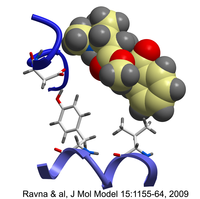Workshop 4
Molecular mechanisms of neural signaling
Chair: Svein Dahl
 The rapid development of molecular biology over the
last 20 years has provided new insight into the molecular mechanisms of signal
transduction in the nervous system. The receptors, transporter proteins and
intracellular proteins involved in signaling mechanisms have been cloned, and
their secondary structures (amino acid sequences) determined. Molecular imaging
techniques have demonstrated the dynamics of intracellular signaling mechanisms
in amazing detail. Three dimensional crystal structures of some of these
proteins have also been determined, and explained their functional mechanisms
at the molecular level.
The rapid development of molecular biology over the
last 20 years has provided new insight into the molecular mechanisms of signal
transduction in the nervous system. The receptors, transporter proteins and
intracellular proteins involved in signaling mechanisms have been cloned, and
their secondary structures (amino acid sequences) determined. Molecular imaging
techniques have demonstrated the dynamics of intracellular signaling mechanisms
in amazing detail. Three dimensional crystal structures of some of these
proteins have also been determined, and explained their functional mechanisms
at the molecular level.
Many of the molecules involved in neural signaling are membrane proteins, which have proven difficult to produce, purify and crystallize. Molecular modeling of such proteins, often based on known crystal structures of other proteins, has gained wide-spread application as a valuable tool to simulate their three-dimensional structures, molecular dynamics, ligand interactions and functional mechanisms. Neurotransmitter transporter proteins, ligand-gated ion channels and G-protein coupled receptors, all proteins imbedded in pre- or postsynaptic nerve cells, are important molecular targets for existing and yet-to-be discovered therapeutic drugs.
This workshop will demonstrate the results of modeling molecules involved in neural signaling, and simulations of their molecular mechanisms.


